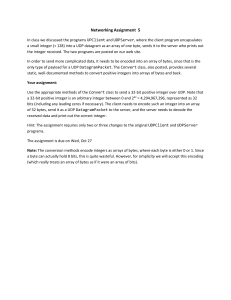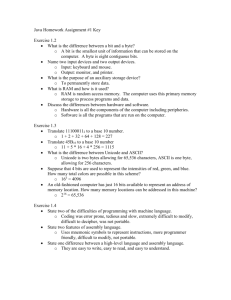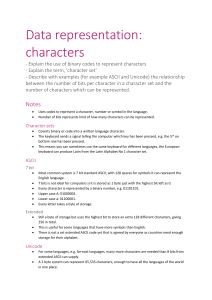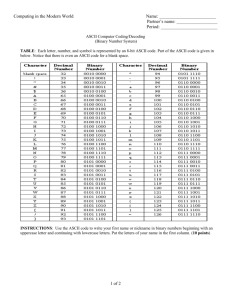Product Data Conventions
advertisement
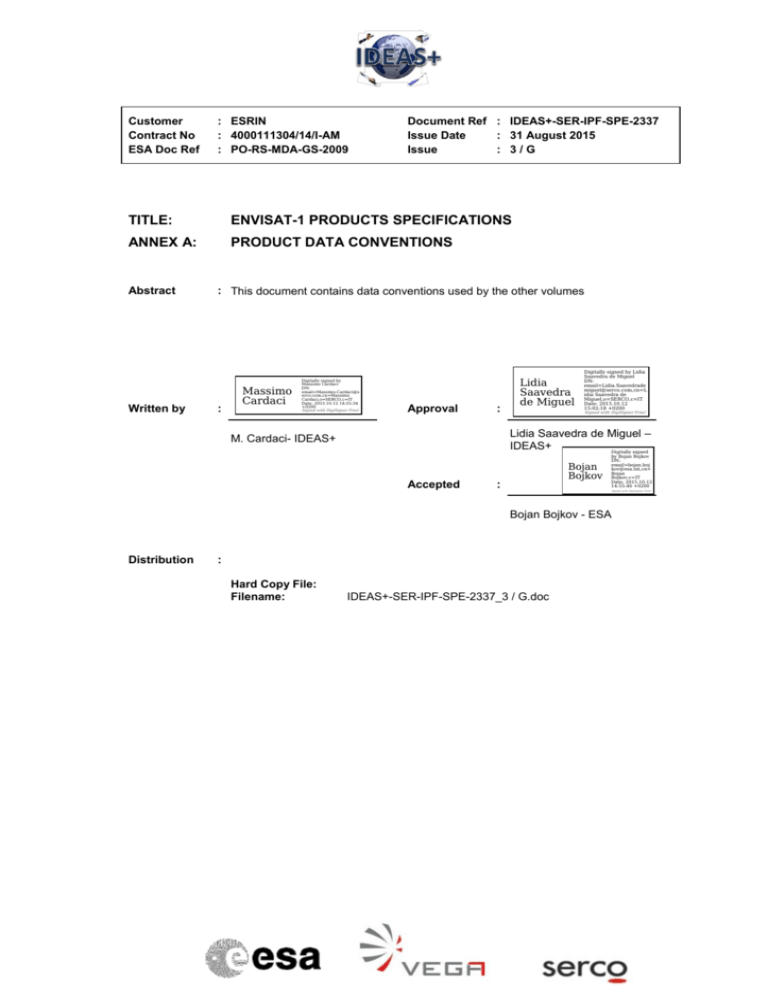
Customer
Contract No
ESA Doc Ref
: ESRIN
: 4000111304/14/I-AM
: PO-RS-MDA-GS-2009
Document Ref : IDEAS+-SER-IPF-SPE-2337
Issue Date
: 31 August 2015
Issue
: 3/G
TITLE:
ENVISAT-1 PRODUCTS SPECIFICATIONS
ANNEX A:
PRODUCT DATA CONVENTIONS
Abstract
Written by
: This document contains data conventions used by the other volumes
:
Massimo
Cardaci
Digitally signed by
Massimo Cardaci
DN:
email=Massimo.Cardaci@s
erco.com,cn=Massimo
Cardaci,o=SERCO,c=IT
Date: 2015.10.12 14:55:34
+0200
Signed with DigiSigner Free!
Approval
:
Lidia
Saavedra
de Miguel
Digitally signed by Lidia
Saavedra de Miguel
DN:
email=Lidia.Saavedrade
miguel@serco.com,cn=L
idia Saavedra de
Miguel,o=SERCO,c=IT
Date: 2015.10.12
15:02:18 +0200
Signed with DigiSigner Free!
Lidia Saavedra de Miguel –
IDEAS+
Digitally signed
M. Cardaci- IDEAS+
Accepted
Bojan
Bojkov
:
by Bojan Bojkov
DN:
email=bojan.boj
kov@esa.int,cn=
Bojan
Bojkov,c=IT
Date: 2015.10.12
14:55:46 +0200
Signed with DigiSigner Free!
Bojan Bojkov - ESA
Distribution
:
Hard Copy File:
Filename:
IDEAS+-SER-IPF-SPE-2337_3 / G.doc
IDEAS+-SER-IPF-SPE-2337
ANNEX A: PRODUCT DATA CONVENTIONS
Issue 3 / G
IDEAS+
TABLE OF CONTENTS
ANNEX A PRODUCT DATA CONVENTIONS ........................................................................... 9
A.1
PRODUCT FILE NAMING ..................................................................................................... 9
A.2
DATA REPRESENTATION ................................................................................................. 12
A.2.1 ASCII Character Set ....................................................................................................... 13
A.2.2 Logical Values ............................................................................................................... 15
A.2.3 Unused Fields ................................................................................................................. 15
A.3
BIT / BYTE NUMBERING ................................................................................................... 16
A.4
TIME ................................................................................................................................... 16
A.5
GEOLOCATION INFORMATION ........................................................................................ 17
A.6
BUFR AND GRIB FORMAT ................................................................................................ 18
A.7
SIZES .................................................................................................................................. 18
A.8
ALIGNMENT IN STRUCTURES FOR THE IBM SP2 ........................................................... 18
Page 2 of 22
IDEAS+
ANNEX A: PRODUCT DATA CONVENTIONS
Issue 3 / G
IDEAS+-SER-IPF-SPE-2337
INDEX OF TABLES
TABLE A.1-1 PRODUCT NAME FIELDS ....................................................................................... 9
TABLE A.2-1 DATA TYPES ..........................................................................................................12
TABLE A.2-2 ASCII EQUIVALENT FORMATS ..........................................................................12
TABLE A.2.1-1 DECIMAL VALUE AND CORRESPONDING ASCII CHARACTER ..................14
TABLE A.2.2-1 LOGICAL VALUES .............................................................................................15
TABLE A.4-1 MJD FORMAT ........................................................................................................17
TABLE A.8-1 TYPE SIZE AND ALIGNMENT FOR THE RISC SYSTEM/6000...........................18
Page 3 of 22
IDEAS+-SER-IPF-SPE-2337
ANNEX A: PRODUCT DATA CONVENTIONS
Issue 3 / G
INDEX OF FIGURES
No figures in the document
Page 4 of 22
IDEAS+
IDEAS+
ANNEX A: PRODUCT DATA CONVENTIONS
Issue 3 / G
IDEAS+-SER-IPF-SPE-2337
AMENDMENT POLICY
This document shall be amended by releasing a new edition of the document in its
entirety. The Amendment Record Sheet below records the history and issue status of
this document.
AMENDMENT RECORD SHEET
ISSUE
REVISION
DATE
CHANGE STATUS
ORIGIN
1
A
12/01/1996
Issue 1
SRR
1
B
16/02/1996
SCR #16, CR #16
Issue 1, Revision B
SRR
Reason for Change:
Updated to reflect information in
PO-TN-ESA-GS-0381 and to address
RIDs of Feb. 2/96 pertaining to the
Level 0 structure.
MPH, SPH, DSD, and DSR structures
modified.
Table added showing generalized
Level 0 product structure.
RIDs Addressed:
ESA/0001:
FEP header defined
ESA/0002:
PF-Host time stamp
clarified
ESA/0004:
Processing PCD added
ESA/0006:
AF PCD ADS and DSD
added
ESA/0007:
page A-3 updated
ESA/0008:
page B-3 updated
ESA/0009:
Table 8.1.1 modified
ESA/0011:
TBD changed to Range/
Doppler
ESA/0013:
FEP header defined
ESA/0014:
Table 8.4.7.4-2
corrected
CSF/1:
Page 5 of 22
IDEAS+-SER-IPF-SPE-2337
ANNEX A: PRODUCT DATA CONVENTIONS
Issue 3 / G
ISSUE
1
REVISION
C
DATE
04/04/1996
2
A
20/05/1996
2
B
10/02/1997
3
A
27/05/1997
3
B
20/09/2001
3
C
10/09/2002
3
D
05/05/2004
Page 6 of 22
IDEAS+
CHANGE STATUS
filename in MPH
corrected
CSF/2:
page A-3 updated
CSF/3:
MPH PCD information
updated
CSF/5:
DSD added to Level 0
SPH
CSF/6:
Section on AATSR
updated and re-issued
CSF/8:
AATSR_O Summary
Sheet updated
SCR #38, CR #38
Issue 1, Revision C
Reason for Change:
Updated Sections 1-6, 17 and Annex A
to reflect changes discussed at the
Products Review Meeting #1,
March 5-8, 1996, as per action item
“AI MDA 6 April 96” from
PO-MN-ESA-00416, Pg. 35.
SCR #71, CR #71
Issue 2
Separate volume created
SCR #102, CR #102
Issue 2, Revision B
Reason for Change:
Originator_ID codes created.
Minor updates.
SCR #169 , CR #169
Issue 3, Revision A
Bit numbering convention corrected
MJD format placed in table
Definition of Ac as recovering both
unsigned and signed char types.
Added IECF as Originator ID on table
A.1-1
Added ACRI and FINPAC as
Originator IDs on table A.1-1 and
updated the complete list to reflect
operational status
ORIGIN
Products
Review
Meeting #1
Products
Review
Meeting #2
Products
Review
Meeting #3
P.Gilles
mail of 5/
05/2004
Subj: Prod
IDEAS+
ANNEX A: PRODUCT DATA CONVENTIONS
Issue 3 / G
ISSUE
REVISION
DATE
IDEAS+-SER-IPF-SPE-2337
CHANGE STATUS
3
E
20/06/2005
New originator IDs:
PAM for matera NRT production
O_M for Orbite Mission
3
F
09/01/2014
Update of Originators list to include DSI
ORIGIN
Update of interpretation of product counter
in case of reprocessing campaigns
3
G
31/08/2015
Update of Stations list to reference external
ESA document (“EO Parameter Code List” PGSI-GSEG-EOPG-TN-07-0001)
Spec
Update
Request
from
P.F
emenias
and Change
of Scenario
on Matera
JCCB-CP323 UPDATE OF
ENVISAT
PRODUCT
SPECIFICAT
IONS for DSI
JCCB-CP323 UPDATE OF
ENVISAT
PRODUCT
SPECIFICAT
IONS for DSI
JCCB-CP323 - update
of envisat
product
specifications
for dsi
(updated
decision
JCCB
20.08.2015)
Page 7 of 22
IDEAS+-SER-IPF-SPE-2337
ANNEX A: PRODUCT DATA CONVENTIONS
Issue 3 / G
IDEAS+
REGISTER OF CHANGES
Section
Table A1--1
Table A1--1
All
All
Table A1--1
Table A1--1
Page 8 of 22
Change
Added “DSI” centre in field “Originator ID”
Added reference to “note 1” in field “counter” (reference in the
table and text after the table.
Porting of template
Updated with IDEAS+ contract details
Field #3 (originator ID): replaced table with reference to ESA
document: “EO Parameter Code List” (PGSI-GSEG-EOPG-TN07-0001). Existing list replaced with footnote
Field #3 (originator ID): added LRC = LRAC backup chain
IDEAS+
ANNEX A: PRODUCT DATA CONVENTIONS
Issue 3 / G
ANNEX A
IDEAS+-SER-IPF-SPE-2337
PRODUCT DATA CONVENTIONS
This appendix summarizes the product conventions used in this document
A.1
PRODUCT FILE NAMING
The first field of the Main Product Header contains the product name. The naming
convention for products is described below.
filename = <product_ID> <processing_stage_flag>
<originator_ID><start_day> <“_”> <start_time> <“_”> <duration> <phase>
<cycle> <“_”> <relative_orbit> <“_”> <absolute_orbit> <“_”><counter>
<“.”> <satellite_ID> <.extension>
The naming convention for auxiliary data files is described in Volume 16.
Table A.1-1 Product Name Fields
Field.
Size in
Characters
Description
Product_ID
10
10 character string identifies sensor, mode
and processing level. See Volume 4 for
details. Characters not used are replaced
with an underscore character.
Processing Stage flag
1
Set to “N” for Near Real Time product
Set to “V” for fully validated (consolidated)
product
Set to “T” for Test product
Set to “S” for a special product.
Letters between N and V are assigned in
order of level of consolidation (i.e., closer to
V = better consolidated)
originator ID
3
Identification of the center which generated
the file.
The 3 character code may be one of the
codes listed in NOTE (2) below.
All codes are TBC by ESA
start_day
8
In the case of instrument products it
corresponds to the start day of the product
from the UTC time of the first DSR. The
format is
YYYYMMDD. For Auxiliary files it may
correspond to file creation date.
start_time
6
Time coverage of the product expressed in
seconds. If the duration of a product is not
Page 9 of 22
IDEAS+-SER-IPF-SPE-2337
ANNEX A: PRODUCT DATA CONVENTIONS
Issue 3 / G
IDEAS+
Table A.1-1 Product Name Fields
Field.
Size in
Characters
Description
relevant information it will be set to
“00000000”.
duration
8
Time coverage of the product expressed in
seconds. If the duration of a product is not
relevant information it will be set to
“00000000”.
phase
1
Mission phase identifier
cycle
3
Cycle number within the mission phase
relative_orbit
5
Relative orbit number within the cycle at the
beginning of the product
absolute_orbit
5
Absolute orbit at the beginning of the
product
counter
4
Numerical wrap-around counter for quick
file identification. For a given product type
the counter is incremented by 1 for each
new product generated by the product
originator (see note 1)
satellite ID
2
E1 = ERS-1, E2 = ERS-2, N1 = ENVISAT-1
Extension
Variable
Optional field. Used only for distribution to
users to indicate common archiving and
compression standards if used (e.g., .gz,
.Z, .tar, .tarZ, .gif, .jpeg, etc.)
Note:
(1) In the case of Reprocessing Campaigns, the 4 digits of the file counter could optionally be set
to the same value (as an example: “0000”). The file counter will in this case only differentiate
(i.e. be incremented) in case of real processing duplicates.
(2) At the time of this PSS update, the current list of stations is attached here. See also The up to
date list is available from the following ESA document: “EO Parameter Code List” (PGSIGSEG-EOPG-TN-07-0001), for eventual subsequent additions:
Code => Station
PDK => PDHS-K
PDE => PDHS-E
IEC => IECF
LRA => LRAC
LRC => LRAC (backup chain)
PDC => PDCC
FOS => FOS-ES
PDA => PDAS-F
PAM => Matera for NRT production
UPA => UK-PAC
Page 10 of 22
IDEAS+
ANNEX A: PRODUCT DATA CONVENTIONS
Issue 3 / G
IDEAS+-SER-IPF-SPE-2337
DPA => D-PAC
IPA => I-PAC
FPA => F-PAC
SPA => S-PAC
EPA => E-PAC
ECM => ECMWF
ACR => ACRI
FIN => FINPAC
O_M => Orbite Mission
DSI => DSI
For example, a fully consolidated Level 0 MIPAS product which contains data
starting on Feb 10, 1999 at 13:32:54 covering a complete orbit (6040 seconds),
from data acquired during mission phase “A”, cycle 31, relative orbit 67, absolute
orbit 15598, generated at the D-PAC and compressed using the gzip utility would
have the form:
MIP_NL__0PVD-P19990210_133254_00006040A031_00067_15598_0324.N1.gz
This file naming convention assumes the use of an operating system that allows
long filenames. Platforms which use operating systems that do not support long
filenames must use a subdirectory tree. The maximum length of a subdirectory
name is eight characters.
For example, an MS-DOS file system (name limited to 12 characters with a
periodon the ninth) would use a subdirectory structured as:
<first 8 characters of Product ID> \ <last 2 characters of
Product_ID><Processing_Stage_Flag> <originator_ID> \ <start_day> \
<start_time> \ <duration> \ <phase> <cycle> \ <relative_orbit> \
<absolute_orbit> \ <counter> <satellite_ID><.extension>
e.g
MIP_NL__\0PVD-P\19990210\133254\00006040\A031\00067\15598\0324N1.gz
Page 11 of 22
IDEAS+-SER-IPF-SPE-2337
ANNEX A: PRODUCT DATA CONVENTIONS
Issue 3 / G
A.2
IDEAS+
DATA REPRESENTATION
The eligible data types for product structures are listed in Table A.2-1.
Table A.2-1 Data Types
Variable Type
C Type
Abbreviation
Range
Character
char
sc: signed char
-128 to 127 (2’s comp.)
uc: unsigned char
0 to 255
ss:
signed
integer
short
-32768 to 32767 (2’s
comp)
us: unsigned
integer
short
0 to 65535
2-byte integer
4-byte integer
8-byte integer
short
long
long long
sl: signed long integer
-2147483648 to
2147483647
ul: unsigned
integer
0 to 4294967295
long
sd: signed long long
integer
-9223372036854775808
to
9223372036854775807
ud: unsigned
long integer
0 to
18446744073709551615
long
4-byte
single
precision floating
point
float
fl
3.4028e+38 (max)
1.17549e-38 (min)
8-byte
double
precision floating
point
double
do
1.79e+308 (max)
2.22e-308 (min)
The IEEE 754-1985 is the chosen standard for storing real numbers.
For header structures which use ASCII values, the following methods for
representing binary data types in ASCII are followed:
Table A.2-2 ASCII Equivalent Formats
Variable
Type
C Type
Character
sc:
char
signed
uc: unsigned
char
2-byte
integer
Page 12 of 22
ss:
signed
short integer
ASCII format
ASCII
Abbreviation
Single ASCII character
(if designated a 1 byte number in
original
a
MPH or SPH format will be SXXX
Ac
SXXXXX
As
IDEAS+
ANNEX A: PRODUCT DATA CONVENTIONS
Issue 3 / G
IDEAS+-SER-IPF-SPE-2337
Table A.2-2 ASCII Equivalent Formats
Variable
Type
4-byte
integer
C Type
ASCII format
ASCII
Abbreviation
us: unsigned
short integer
(6 bytes)
sl:
signed
long integer
SXXXXXXXXXX
(11 bytes)
Al
SXXXXXXXXXXXXXXXXXXXX
(21 bytes)
Ad
ul: unsigned
long integer
8-byte
integer
sd:
signed
long
long
integer
ud: unsigned
long
long
integer
4-byte
single
precision
floating
point
fl
SX.XXXXXXXXESXX
(15 bytes)
Afl
8-byte
double
precision
floating
point
do
SX.XXXXXXXXXXXXXXXXXESXXX
(25 bytes)
S.XXXXXX
(8 bytes)
SXXXX.XXXXXX
(12 bytes)
SXXXXXXX.XXX
(12 bytes)
Ado
Ado06
Ado46
Ado73
a. S = sign (+ or -), X = a single number in ASCII format between 0 and 9
Note that the sign is always included, even for positive numbers, and unused
positions are set to zero. E.g. the number 1.435E12 is represented as
+1.43500000E+12; the long integer 123456789 is represented as +0123456789.
The range of value allowed for each ASCII format can be deduced of the format,
e.g. Ac range is -999 ... 999 . However this does not means that all the
representable values will be used, e.g. some field counter declared as Ac will
never take negative values.
A.2.1 ASCII Character Set
The standard ASCII character code set used for ENVISAT Products is the first
128 characters of the 8-bit ISO8859 - 1 character code, which is identical to the
long established US-ASCII 7-bit character code. For the sake of clarity, the
complete list of ASCII codes used for products is given below. The rules used to
Page 13 of 22
IDEAS+-SER-IPF-SPE-2337
ANNEX A: PRODUCT DATA CONVENTIONS
Issue 3 / G
IDEAS+
create ASCII header structures are given in Volume 5 of this document. When
ASCII character strings are included in binary data sets, the string is left-justified
within the field.
ASCII blank-space characters are added to the right of the string to fill the field.
Note the symbol Ø is used in the documentation to indicate the position of an
ASCII blank-space character (character 32) in Table A.2.1-1.
Table A.2.1-1 Decimal Value and corresponding ASCII character
Page 14 of 22
IDEAS+
ANNEX A: PRODUCT DATA CONVENTIONS
Issue 3 / G
IDEAS+-SER-IPF-SPE-2337
A.2.2 Logical Values
Logical values are values which may be either true or false. The following
convention is followed:
Table A.2.2-1 Logical Values
Logical
Value
ASCII Representation
True
1
ASCII code 49
False
0
ASCII code 48
a
a. See Table A.2.1-1
A.2.3 Unused Fields
In cases where a field is not fully filled by the value which it contains, placeholder
values are used. For ASCII strings, the placeholder character is the ASCII blankspace character (ASCII character 32). For numerical-values, the placeholder value
is zero unless otherwise stated. For ASCII numerics (defined in Table A.2-2
above) an ASCII numeric of 0 (in the appropriate format) may be used if
specified.
Page 15 of 22
IDEAS+-SER-IPF-SPE-2337
ANNEX A: PRODUCT DATA CONVENTIONS
Issue 3 / G
A.3
IDEAS+
BIT / BYTE NUMBERING
For the purpose of identifying bits within a multi-byte structure, the numbering
convention shown below is used. Byte 0 is the most significant byte. It is
transmitted before byte 1. Within a byte, bit 0 is the least significant bit. This is
the convention defined in the Product Format Guidelines (document R-1).
1 byte structure:
Bytes
Bits
BYTE 0
7
6
5
4
3
2
1
0
2 byte structure:
Bytes
Bits
BYTE 0
15
14
13
12
BYTE 1
11
10
9
8
7
6
5
4
3
2
1
0
3 byte structure:
BYTE 0
Byte
s
Bits
2
3
2
2
2
1
2
0
1
9
BYTE 1
1
8
1
7
1
6
1
5
1
4
1
3
1
2
1
1
1
5
1
4
BYTE 2
9
1
0
8
7
6
5
4
3
2
1
0
4 byte structure:
Bytes
Bits
BYTE 0
3
1
3
0
A.4
2
9
2
8
2
7
BYTE 1
2
6
2
5
2
4
2
3
2
2
2
1
2
0
1
9
BYTE 2
1
8
1
7
1
6
1
3
1
2
1
1
BYTE 3
1
0
9
8
7
6
5
4
3
TIME
Within the PDS time is used with an accuracy of 1 microsecond, expressed as:
UTC (Universal Time Coordinate) almost equivalent to GMT (Greenwich
Meridian Time) presented as a string of 27 significant characters with the
format:
DD-MMM-YYYYØhh:mm:ss.tttttt
where
DD:
MMM:
YYYY:
Page 16 of 22
day
month
year
[1..31]
[JAN, FEB,...NOV, DEC]
[1950..2050]
2
1
0
IDEAS+
ANNEX A: PRODUCT DATA CONVENTIONS
Issue 3 / G
Ø:
blank character
hh:
mm:
ss:
tttttt:
irrelevant
hour
minutes
second
us
IDEAS+-SER-IPF-SPE-2337
[00..23]
[00..59]
[00..59]
[000000..999999] may be blanked by spaces if
e.g. December 29, 1999 at 10:00 is coded as
29-DEC-1999 10:00:00.000000 or 29-DEC-1999 10:00:00
MJD 2000 (Modified Julian Day 2000) is the decimal number of day since
January 1, 2000 at 00:00 hours. It is represented by 3 long integers (4 bytes
each, 12 bytes total) as follows:
Table A.4-1 MJD format
N
Description
Units
Byte
Length
Data
Type
Dim
1
Number of days elapsed since the 1st of January
2000 at 0:0 hour. It may be negative, and is thus a
signed long integer
days
4
sl
1
2
Number of seconds elapsed since the beginning of
that day
s
4
ul
1
3
Number of microseconds elapsed since the last
second
us
4
ul
1
Total
12
e.g., December 29, 1999 at 10:00 is coded as
{-3 , 36000, 0}
As a general rule, UTC time format is used in the MPH and SPH, while MJD
format will be used when time stamps are required for DSRs within a DS.
A.5
GEOLOCATION INFORMATION
The WGS84 co-ordinate system is used for all latitude/longitude geolocation. The
system is described in detail in Document R-20.
Geolocation information is expressed within ENVISAT products using the
following convention:
latitude:
4 byte signed long integer
units = 10-6 degrees
positive north (-90 = south pole, +90 = north pole)
Page 17 of 22
IDEAS+-SER-IPF-SPE-2337
ANNEX A: PRODUCT DATA CONVENTIONS
Issue 3 / G
IDEAS+
longitude: 4 byte signed long integer
units = 10-6 degrees
positive east, 0 = Greenwich meridian, range: [-180, 180) i.e.,
west direction includes -180, east does not include +180
Latitude is always listed prior to longitude.
A.6
BUFR AND GRIB FORMAT
The Binary Universal Form for the Representation of meteorological data (BUFR)
is a bit-oriented data exchange format used in meteorology. It is not supported
within the ENVISAT PDS but ENVISAT products may be converted to this
format outside the PDS. The format is described in Document R-21.
GRIB is the GRIdded Binary form for meteorological data representation. It is not
supported within the ENVISAT PDS, but auxiliary data accepted into the PDS
from the ECMWF may be in this format. The format is described in Documents
R-28 and R-29.
A.7
SIZES
All sizes provided in this document follow the following convention:
A.8
1 kilobyte = 1x10 bytes = 1 kB or 1 kByte
1 megabyte = 1x10 bytes = 1 MB or 1 MByte
ALIGNMENT IN STRUCTURES FOR THE IBM SP2
All sizes listed in the Product Specifications assume byte aligned structures.
However, the IBM SP2 aligns structures in memory according to the table below.
Table A.8-1 Type Size and Alignment for the RISC System/6000
Type
Alignment of Member
char
byte aligned
1
short
2-byte aligned
2
Page 18 of 22
Size (Bytes)
IDEAS+
ANNEX A: PRODUCT DATA CONVENTIONS
Issue 3 / G
IDEAS+-SER-IPF-SPE-2337
Table A.8-1 Type Size and Alignment for the RISC System/6000
Type
Alignment of Member
Size (Bytes)
(long) int
4-byte aligned
4
long long int
8-byte aligned
8
pointer
4-byte aligned
4
float
4-byte aligned
4
double
8-byte aligned if -qalign=natural.
8
Otherwise, word aligned.
long double with
16-byte aligned if -qalign=natural.
-qlongdouble or
Otherwise, word aligned.
16
-qldb1128 option.
This means that if data is stored as structures, the sizes listed in the Product
Specifications may not correspond exactly to the size of memory the IBM
SP2allocates to store them.
For example, suppose an ADSR consisted of 5 characters followed by a float:
e.g.
unsigned char data1[5];
float data2;
Since a float is 4 bytes and a char is 1 byte, the size of this data would be listed as
9 bytes.
However, suppose this data was declared as a structure (as in the DDT):
e.g.
struct st
{
unsigned char data1[5];
float data2;
};
According to Table A.8-1, the IBM will only store a float in memory beginning
on a 4-byte boundary. Therefore, it will add 3 bytes of padding to the unsigned
character array before storing the float. Thus, the actual size of the structure in
memory becomes 5 bytes + 3 bytes padding + 4 byte float = 12 bytes.
Obviously, this padding is not desirable as it tends to bloat the size of products
and causes the byte alignment to differ from that of the Product Specifications.
Output products must have the same size and alignment as specified within this
document.
Page 19 of 22
IDEAS+-SER-IPF-SPE-2337
ANNEX A: PRODUCT DATA CONVENTIONS
Issue 3 / G
IDEAS+
There are two possible solutions to this problem:
1. The IBM C++ compiler has a flag which can be set to force the use of byte
aligned structures.
2. Elements of a structure may be copied individually to ensure proper
alignment and size of data members.
Page 20 of 22
IDEAS+
ANNEX A: PRODUCT DATA CONVENTIONS
Issue 3 / G
IDEAS+-SER-IPF-SPE-2337
DISTRIBUTION LIST
NAME
Henri Laur
(ESA)
Bojan Bojkov
(ESA)
Simon Jutz
(ESA)
Pascal Gilles
(ESA)
COPY
NAME
COPY
1
1
1
1
Page 21 of 22
IDEAS+-SER-IPF-SPE-2337
ANNEX A: PRODUCT DATA CONVENTIONS
Issue 3 / G
IDEAS+
End of Document
Page 22 of 22


